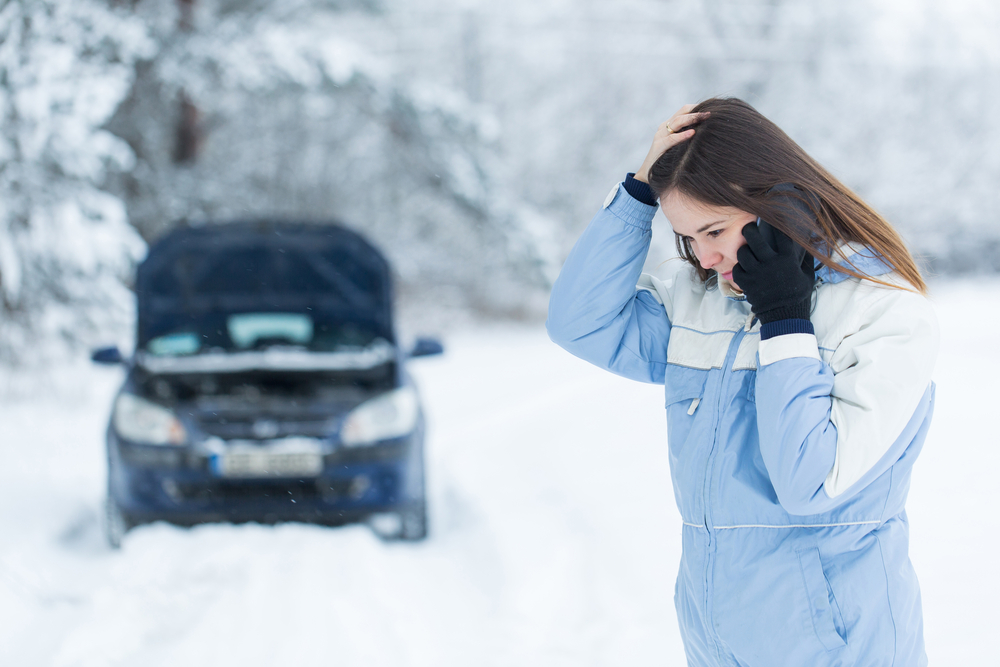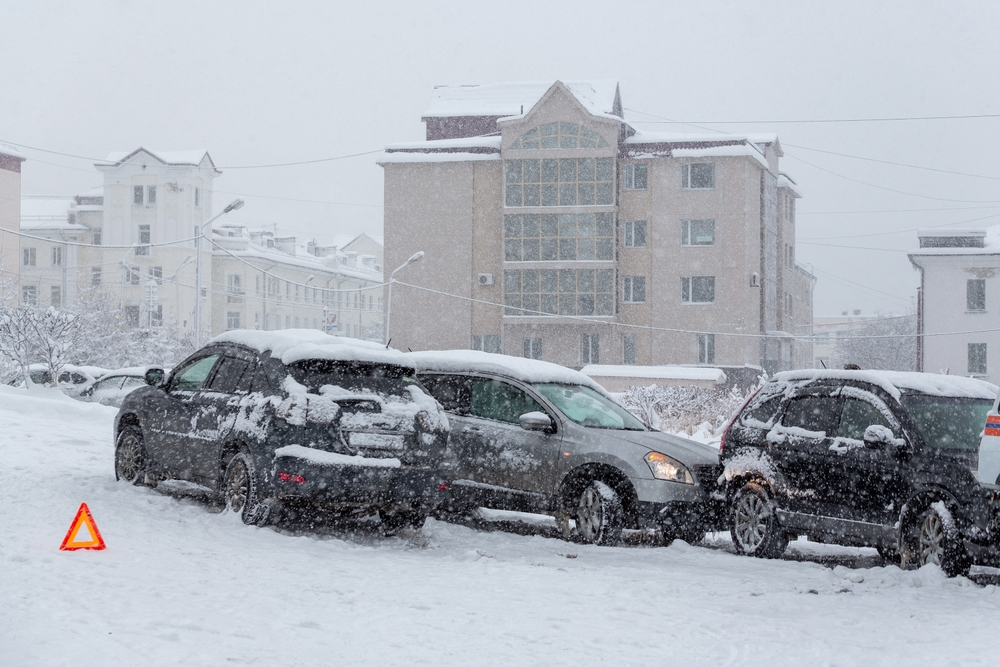Winter Driving Hazards in Arvada: Who’s Liable in a Crash?

Written by Matthew Weidinger

Winter driving in Arvada presents unique hazards such as icy roads, reduced visibility, and sudden weather changes. These conditions increase the risk of crashes, making it essential to understand who is liable when an accident occurs.
Liability in a winter crash typically depends on factors like driver negligence, road maintenance, and weather warnings. The driver who fails to adjust to conditions or violates traffic laws is often held responsible, but municipalities may share liability if road conditions were poorly managed.
Common Winter Driving Hazards in Arvada
Icy Roads and Black Ice
Icy roads are a major hazard in Arvada during the winter months. Black ice, often invisible, forms when moisture freezes on road surfaces, creating a slick layer that can cause sudden loss of traction. It commonly appears on bridges, shaded areas, and intersections where the sun does not reach.
Drivers often underestimate the slipperiness of black ice because it looks like wet pavement. Slowing down and avoiding sudden braking or sharp turns are critical to reduce crash risk. Vehicles without proper winter tires or with worn tread struggle with grip, increasing the chance of sliding.
Reduced Visibility from Snow and Fog
Snowstorms and fog frequently reduce visibility on Arvada roads, making it harder to see other vehicles, pedestrians, and road signs. Snow can also accumulate on windshields shortly after clearing, blocking vision.
Fog combined with cold weather creates a thick mist near the ground, especially early mornings and late evenings. Drivers must use low-beam headlights and keep following distances longer than usual. Speed limits may not be safe in dense fog or heavy snowfall despite posted signs.
Danger from Snow Accumulation and Slush
Snow accumulation on roads narrows lanes and obscures lane markings, which can cause confusion and increased chances of side collisions. Slush – a mix of snow, ice, and water – creates uneven, slippery patches that affect braking and steering.
Slush can hide potholes or debris, leading to vehicle damage or loss of control. Snow banks along curbs complicate parking and limit safe clearance, forcing drivers closer to moving traffic. Maintaining slower speeds and steady acceleration helps prevent accidents in these conditions.
Determining Liability in Arvada Winter Crashes
Legal Implications for Drivers Involved in Accidents
Drivers in Arvada face legal consequences if found responsible for winter crashes. Liability often hinges on whether the driver complied with local traffic laws and exercised reasonable care in hazardous conditions. For example, failing to reduce speed on icy roads or ignoring warnings can result in citations or lawsuits.
Insurance companies may use police reports, witness statements, and accident reconstruction to determine fault. If a driver is found liable, they may be required to cover damages, including property repair and medical expenses. Additionally, repeated offenses during winter can lead to increased insurance premiums or license suspensions.
The Role of Negligence in Crash Liability
Negligence is central to assigning liability in winter crashes. It refers to a driver’s failure to act as a reasonable person would under similar conditions. In Arvada, common negligent behaviors include excessive speed on icy roads, distracted driving, and improper vehicle maintenance, such as worn tires.
Proving negligence requires showing duty, breach of that duty, causation, and damages. For instance, a driver must prove they had a legal responsibility to drive safely, that they breached this by driving too fast for snow conditions, which caused the collision, resulting in injury or damage.
Negligence findings directly impact court rulings and insurance claims, as they establish who is financially responsible for losses.
Shared Fault and Comparative Negligence
Arvada follows a comparative negligence system, meaning fault can be divided between parties. If both drivers share blame—such as one speeding and the other failing to yield—liability is split according to each party’s percentage of fault.
Damages are reduced proportionally. For example, if a driver is 30% at fault, their compensation will be reduced by that amount. Shared fault encourages drivers to exercise caution even when another party contributed to the accident.
This approach helps address complex winter crash situations, where poor weather and multiple errors often interact. It also affects legal strategies as parties gather evidence to reduce their share of fault.

Post-Accident Steps and Legal Considerations
Essential Actions After a Winter Crash
Drivers should first ensure everyone’s safety by moving to a secure location, if possible, without risking further accidents. Calling 911 is mandatory to report injuries or significant vehicle damage.
Documenting the scene with photos of vehicle damage, road conditions, and any skid marks is critical. Exchanging contact and insurance information with other parties involved helps streamline claims. Witness statements, if available, should also be collected.
Submitting a police report is legally required if damages exceed $1000 or if anyone is injured. Drivers must avoid admitting fault at the scene to prevent complicating liability assessments later.
Reducing Legal Risk as an Arvada Driver
Drivers can reduce their liability by maintaining their vehicles for winter conditions, such as using snow tires and ensuring brakes function properly. Cautious driving on icy roads—reducing speed and increasing following distance—reduces the risk of collisions.
Immediately reporting the accident to one’s insurance company is essential. Providing accurate and consistent details prevents claims denial or disputes.
If a crash causes injuries, a local attorney familiar with Arvada traffic laws can clarify rights and responsibilities. This step can limit missteps during complex claims or legal negotiations.
Overview of Legal Processes in Winter Accident Cases
Legal proceedings often begin with claims investigations where insurance adjusters review evidence and statements. If fault is disputed, arbitration or litigation may follow.
Arvada courts typically evaluate factors such as weather conditions, driver behavior, and adherence to traffic laws to determine liability. Comparative negligence can reduce compensation if both parties share fault.
Resolution can occur through settlement or trial. Settlements often save time and legal fees but require careful review to ensure fair compensation. If a court case proceeds, evidence collected immediately after the accident plays a pivotal role.
Why Legal Representation Matters After Winter Collisions
Choosing an Experienced Attorney
Selecting an attorney with experience in winter driving accidents is crucial for successful case navigation. These attorneys understand how weather conditions affect fault determination and know how to gather evidence such as accident reports, expert testimonies, and weather data.
An experienced lawyer can identify key factors like road maintenance responsibility and driver behavior under icy conditions. They also navigate insurance company tactics that might reduce settlements. Their counsel ensures that claimants receive fair compensation for property damage, medical expenses, and lost wages.
How Smith & Weidinger PLLC Can Assist in Your Case
Smith & Weidinger PLLC specializes in personal injury and auto accident cases, including winter crash scenarios. We provide thorough case evaluations, helping clients understand their rights and possible outcomes.Our team works closely with experts to reconstruct accidents and demonstrate liability clearly. Smith & Weidinger also handles all communication with insurance companies to prevent claim undervaluation. We focus on securing full compensation for injuries, damages, and pain and suffering related to winter accidents in Arvada. Contact our team today!
Note: The information provided in this blog post has been compiled from publicly available and secondary sources. While we strive for accuracy, some details may become outdated or contain inadvertent errors. If you believe any information is incorrect or requires updating, please contact Smith & Weidinger so that we may review and make the appropriate corrections.
Disclaimer: This blog post is for informational purposes only and is not intended as a solicitation for business. The photo used is not from the scene of the incident described. Viewing this content does not create an attorney-client relationship with Smith & Weidinger. If you have been injured in an accident, please seek immediate medical attention and then consult with a qualified attorney to discuss your legal rights and options.










